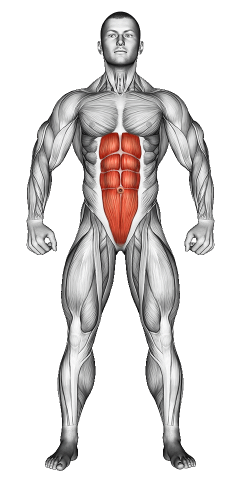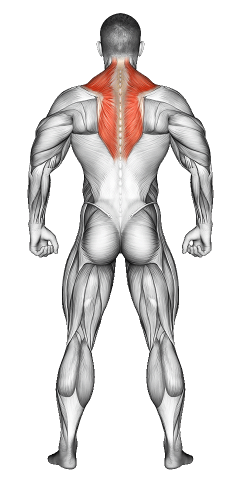Knee Tucks: Video Tutorial & Exercise Guide

Written By: Claude Michael
Updated: Oct 13, 2024
| Workout | Knee Tucks |
| Primary Muscle Group | Abs |
| Secondary Muscle Group | Shoulders |
| Equipment Required | Bodyweight |
| Force Type | N/A |
| Mechanics | Compound |
| Exercise Type | Strength |
| Difficulty | Intermediate |
Knee Tucks: Video Tutorial & Exercise Guide
Secondary Muscles Group
Knee Tucks: Step-by-Step Guide
- Step 1: Sit on the floor or on an exercise mat with your legs extended straight out in front of you and your hands placed slightly behind your hips for support.
- Step 2: Lean back slightly, keeping your core engaged, and lift your feet a few inches off the ground while keeping your legs straight.
- Step 3: Begin by bending your knees and bringing them toward your chest, squeezing your abs as you tuck your knees.
- Step 4: Extend your legs back out to the starting position, keeping them elevated and maintaining tension in your core.
- Step 5: Repeat the movement for the desired number of reps, focusing on controlled motion throughout the exercise.
Knee Tucks: Overview
Knee tucks are a simple yet effective core exercise that targets the entire abdominal region. By pulling your knees toward your chest, you engage both your upper and lower abs, helping to build strength and stability in the core.
This exercise is suitable for all fitness levels and can easily be modified for beginners by adjusting the angle of the lean or performing the movement on an incline bench for more support. Knee tucks are a great way to strengthen your core without requiring any equipment.
Knee Tucks: Benefits
Knee tucks are highly effective for strengthening the entire core, including the upper and lower abs. This movement also engages the hip flexors, helping improve mobility and core stability. Regularly performing knee tucks can help with posture, balance, and overall functional fitness.
By requiring core engagement throughout the movement, knee tucks build endurance and stability, making them beneficial for athletes or anyone looking to improve their abdominal strength.
Knee Tucks: Pro Tips & Advanced Techniques
For better results, keep your movements slow and controlled, focusing on engaging your core muscles throughout the entire exercise. Avoid swinging your legs or relying on momentum to complete the movement. To increase difficulty, you can perform knee tucks while holding a light weight between your feet or using an exercise ball to add an extra challenge to your core.
Knee Tucks: Progression Plan
Beginner
Intermediate
Advanced
Knee Tucks: Frequently Asked Questions (FAQs)
What muscles do knee tucks target?
+Knee tucks primarily target your core muscles, including the rectus abdominis and transverse abdominis. They also engage the hip flexors and lower back muscles for stability.
Can beginners do knee tucks?
+Yes, knee tucks are beginner-friendly. Beginners can modify by reducing the range of motion or by performing the exercise on an incline to make it easier.
How often should I perform knee tucks?
+Incorporate knee tucks into your core routine 2-3 times per week. They can be combined with other core exercises for a balanced workout.
What common mistakes should I avoid?
+Avoid using momentum to swing your legs up. Instead, focus on controlled movements that engage your core and avoid straining your lower back.
Share
Don’t Wish for It, Work for It – Join the FlexXP Newsletter Today!
Thank you for signing up for the FlexXP Newsletter!
This site is protected and the Google Privacy Policy and Terms of Service apply.

